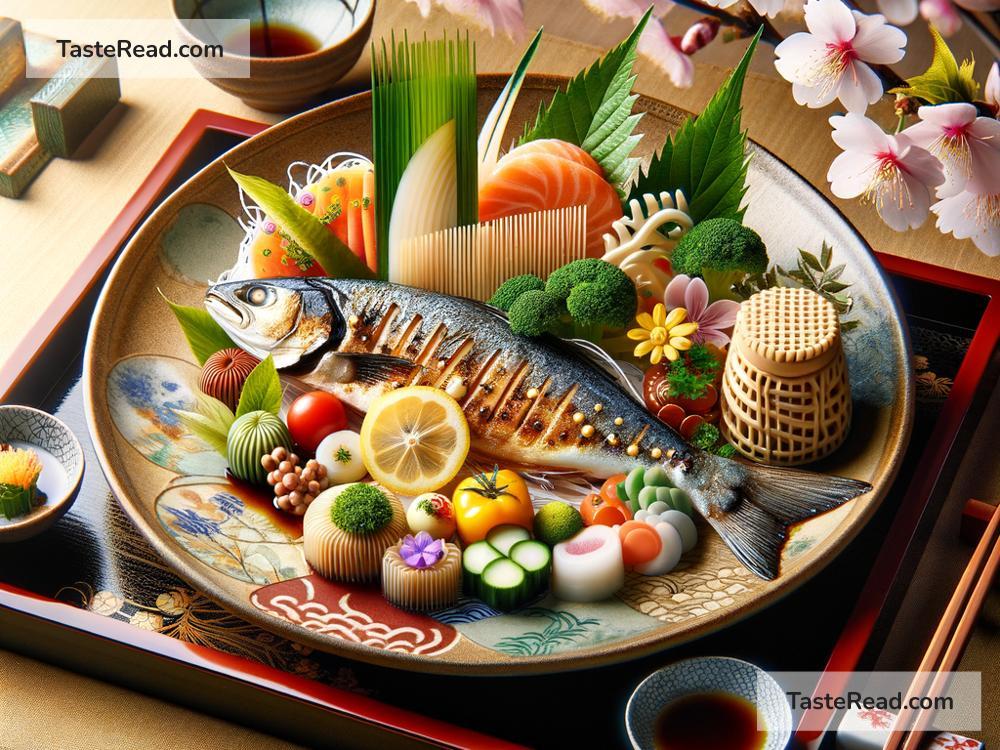The Cultural Symbolism of Fish in Japanese Kaiseki Cuisine
Japan has a rich history of culinary art, and one of its most refined traditions is kaiseki cuisine. Kaiseki is not just food; it’s an experience that combines flavors, presentation, and philosophy. Each dish in a kaiseki meal represents a harmony between nature, seasonality, and deep cultural meaning. Among the key ingredients, fish holds a special place. Today, we’ll explore the cultural symbolism of fish in Japanese kaiseki cuisine, looking at its history, significance, and unique connection to Japanese culture.
What Is Kaiseki Cuisine?
Kaiseki is a traditional multi-course Japanese meal served with elegance and balance. Unlike Western-style courses, kaiseki prioritizes aesthetics and celebrates the natural beauty of ingredients. It consists of small dishes like soups, appetizers, grilled items, steamed dishes, and desserts. Seasonal ingredients are the centerpiece of each meal, and every dish is carefully plated to showcase the colors and textures of the food.
Fish, as one of the most commonly used ingredients, appears in various forms throughout a kaiseki meal. It might be served raw (sashimi), grilled, steamed, or simmered in a subtle sauce. Though delicious, fish is more than just food; it holds deep cultural symbolism that has been embraced for centuries.
Fish in Japanese Culture
Fish are deeply embedded in Japanese culture, both in daily life and traditions. As an island nation surrounded by the sea, Japan has relied on fish for sustenance for thousands of years. Fresh seafood has always been abundant and easy to access, making it central to Japanese cooking.
Beyond its practicality, fish carries significant cultural and spiritual meaning. In Japanese folklore, fish are often symbols of good fortune, strength, perseverance, and renewal. Certain fish, such as the carp (koi), are celebrated for their ability to overcome obstacles, symbolizing determination. The image of fish swimming up a stream is a powerful metaphor for success and resilience.
Fish also hold sacred meanings in Shinto, one of Japan’s main religions. Shinto emphasizes a strong connection with nature, and fish are seen as representations of purity and life cycles. These ideas naturally feed into the philosophy behind kaiseki cuisine and explain why fish are such an important element in this traditional dining practice.
Fish and Seasonality in Kaiseki
One of the key principles of kaiseki cuisine is its focus on the seasons. The meal is designed to reflect the beauty of nature during a particular time of year. Fish is a perfect ingredient for this philosophy because the availability of certain species often changes with the seasons.
For example, in spring, fish like sea bream (tai) symbolize renewal and fresh beginnings. Tai is considered a fish of celebration in Japan and is often served during festivals or special occasions. In summer, grilled eel (unagi) takes center stage as it is believed to bring energy and stamina to combat the heat. Autumn might feature salmon or mackerel, which are rich and hearty, reflecting the season’s cooler weather. In winter, crab and fatty tuna provide luxurious and comforting textures.
By choosing seasonal fish for kaiseki meals, chefs honor nature’s cycles and connect diners with the world around them. Every bite becomes a reflection of the time of year, helping people appreciate both the present moment and the larger rhythms of life.
Aesthetic Presentation and Symbolism
The way fish is served in kaiseki cuisine often carries symbolic meaning. Kaiseki chefs are known for their incredible attention to detail in presentation, and fish dishes are no exception. The arrangement, garnishes, and even the plates are selected to convey meaning.
For example, a fish might be served with garnishes shaped like leaves or flowers, reminding the diner of the current season. The fish could be plated to look as though it’s swimming or paired with elements that evoke the ocean. This not only highlights the natural beauty of the fish but also provides a poetic connection to nature, a key element in Japanese culture.
Certain fish are served in ways that represent celebration or hope. Tai, the sea bream mentioned earlier, is often prepared whole and carefully arranged for festive occasions. It symbolizes prosperity and happiness, making it a favorite at weddings and New Year celebrations.
The colors of the fish and its garnishes also matter. Kaiseki chefs often use colorful, vibrant elements that evoke feelings related to life, harmony, and joy. This aesthetic care extends to every aspect of the meal, creating a deeply emotional dining experience.
Fish as a Representation of Philosophy
Ultimately, the role of fish in kaiseki cuisine reflects the broader philosophies of Japanese culture. Kaiseki meals emphasize balance, respect for nature, and mindfulness—all values rooted in Japanese traditions. Fish, as an ingredient connected to water, symbolizes flow and change, reminding us to embrace life’s impermanence.
On a practical level, fish in kaiseki also showcases the importance of craftsmanship and expertise. Preparing fish requires skill, patience, and precision. From cleaning to slicing to cooking, every step requires a level of mastery that embodies the respect Japanese chefs have for their craft.
Conclusion
Fish is far more than just an ingredient in Japanese kaiseki cuisine; it is a cultural symbol that connects people to nature, the seasons, and traditional values. Through careful selection, preparation, and presentation, fish transforms into a celebration of life, harmony, and resilience. The artistry of kaiseki cuisine reminds us that food is not just nourishment but a meaningful reflection of the world around us.
So, the next time you enjoy a Japanese meal, especially kaiseki, take a moment to appreciate the humble fish. It carries centuries of history, culture, and symbolism on your plate, inviting you to savor not only the flavors but also the deeper meaning behind the meal.


